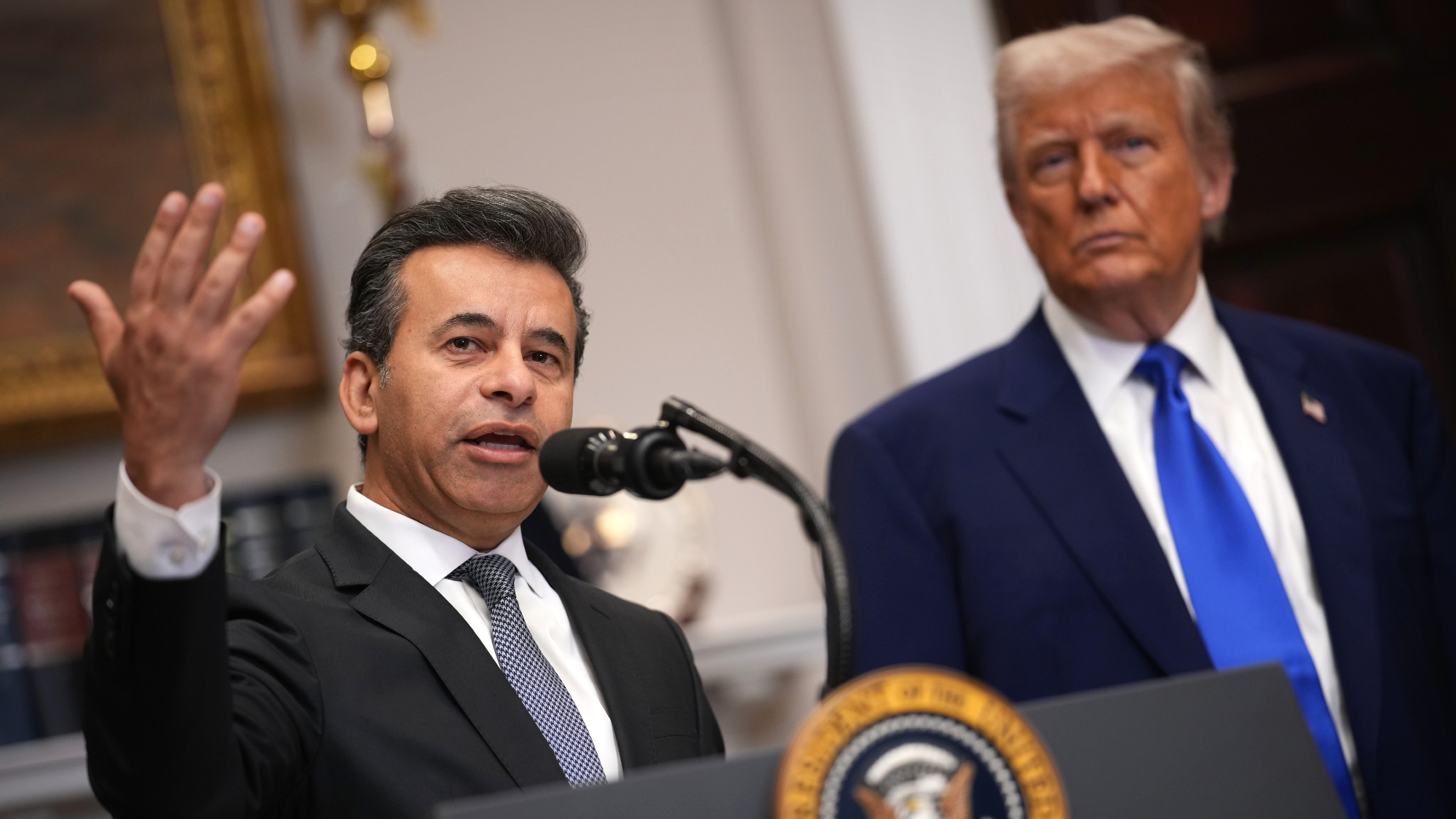What does furloughing mean and who is eligible?
Scheme to keep workers in their jobs goes live today

The UK government’s scheme to help employers retain staff during the coronavirus pandemic comes into effect today.
Under the Coronavirus Job Retention Scheme, the government will pay 80% of furloughed workers’ wages, up to £2,500 a month, if they are put on leave as a result of the outbreak.
Chancellor Rishi Sunak said: “We promised support would be available by the end of April - today, we deliver our promise.”
The Week
Escape your echo chamber. Get the facts behind the news, plus analysis from multiple perspectives.

Sign up for The Week's Free Newsletters
From our morning news briefing to a weekly Good News Newsletter, get the best of The Week delivered directly to your inbox.
From our morning news briefing to a weekly Good News Newsletter, get the best of The Week delivered directly to your inbox.
The new system can process up to 450,000 applications an hour, and eligible employers should then receive the money within six days, reports the BBC.
Adam Marshall, director general of the British Chambers of Commerce, said: “With April's payday approaching, it is essential that the application process is smooth and that payments are made as soon as possible.
“Any delay would exacerbate the cash crisis many companies are facing and could threaten jobs and businesses.”
Sunak announced last week that the scheme would be extended by a further month, to the end of June. The extension comes amid signs that the government plans to keep the country in lockdown late into that month.
A free daily email with the biggest news stories of the day – and the best features from TheWeek.com
What is furloughing?
Furloughing is granting – or mandating – a leave of absence for a worker. A furloughed worker is someone who remains employed in their regular job, but has been told to stop working.
The government has announced special arrangements for employees furloughed because of the coronavirus crisis.
What has the government made available?
Under the new Coronavirus Job Retention Scheme, every employer in the UK is encouraged to keep their workers on with access to government support.
All UK employers can get support to continue paying 80% of the salaries of employees’ who would otherwise have been laid off during the coronavirus outbreak because employers could not cover staff costs.
If your employer makes you a furloughed worker, they can claim a grant of up to 80% of your wages up to a cap of £2,500 per month. Your employer can choose to top your salary up to its normal amount out of their own funds.
For full-time and part-time salaried employees, the employee’s actual salary before tax, as of 28 February 2020, should be used to calculate the 80%.
Who can claim?
Any UK organisation with employees can apply, including:
- businesses
- charities
- recruitment agencies (agency workers paid through PAYE)
- public authorities
The scheme will also cover employees who were made redundant since 28 February 2020, but have been re-hired by their employer after the government’s announcement of support.
Employees who are “shielding” in line with public health guidance – for instance, those over 75 or with underlying health conditions – can be placed on furlough.
Employees cannot work for their employer while they are furloughed, even on a part-time or reduced-hours basis.
Who will miss out?
New employees hired after 28 February 2020 cannot be furloughed or claimed for in accordance with this scheme, says the government website.
This apparent loophole has been blamed for the sacking of a number of full-time staff who had recently changed jobs. Sky News last month reported speaking to “dozens of workers who started new roles in the days and weeks after the cut-off point” and were subsequently laid off.
However, the government has now changed the scheme so that “people who were furloughed after starting a new job after this date can ask their previous employer to re-employ them in order for them to receive 80% of their former salary”, says Personnel Today.
“It has also been clarified that employees can start a new job for another employer while on furlough, but only if contractually allowed by the organisation that has put them on furlough,” adds the free-access HR website.
Diane Gilhooley, global head of employment, labour and pensions at law firm Eversheds Sutherland, said the scheme was now closer to an employee income protection scheme, rather than a redundancy avoidance scheme.
“The Job Retention Scheme was originally announced with the aim of helping employers severely affected by the pandemic to preserve jobs and avoid redundancies.
“The updated guidance restates the original purpose, but then extends the scheme to situations falling outside this purpose,” she said.
How can employers make the claim?
To access the Coronavirus Job Retention Scheme, employers must designate specific employees as “furloughed workers” and notify them of their status.
They will then have to apply through an online HMRC portal.
Employers can submit only one claim at least every three weeks, which is the minimum length an employee can be furloughed for.
Claims can be backdated until 1 March if applicable.
Once HMRC has received your claim and you are eligible for the grant, it will make a BACS payment to a UK bank account.
Employers must then pay the employee all the grant that is received.
-
 What will the US economy look like in 2026?
What will the US economy look like in 2026?Today’s Big Question Wall Street is bullish, but uncertain
-
 Alaa Abd el-Fattah: should Egyptian dissident be stripped of UK citizenship?
Alaa Abd el-Fattah: should Egyptian dissident be stripped of UK citizenship?Today's Big Question Resurfaced social media posts appear to show the democracy activist calling for the killing of Zionists and police
-
 Biggest political break-ups and make-ups of 2025
Biggest political break-ups and make-ups of 2025The Explainer From Trump and Musk to the UK and the EU, Christmas wouldn’t be Christmas without a round-up of the year’s relationship drama
-
 Covid-19 mRNA vaccines could help fight cancer
Covid-19 mRNA vaccines could help fight cancerUnder the radar They boost the immune system
-
 The new Stratus Covid strain – and why it’s on the rise
The new Stratus Covid strain – and why it’s on the riseThe Explainer ‘No evidence’ new variant is more dangerous or that vaccines won’t work against it, say UK health experts
-
 RFK Jr. vaccine panel advises restricting MMRV shot
RFK Jr. vaccine panel advises restricting MMRV shotSpeed Read The committee voted to restrict access to a childhood vaccine against chickenpox
-
 RFK Jr. scraps Covid shots for pregnant women, kids
RFK Jr. scraps Covid shots for pregnant women, kidsSpeed Read The Health Secretary announced a policy change without informing CDC officials
-
 New FDA chiefs limit Covid-19 shots to elderly, sick
New FDA chiefs limit Covid-19 shots to elderly, sickspeed read The FDA set stricter approval standards for booster shots
-
 RFK Jr.: A new plan for sabotaging vaccines
RFK Jr.: A new plan for sabotaging vaccinesFeature The Health Secretary announced changes to vaccine testing and asks Americans to 'do your own research'
-
 Five years on: How Covid changed everything
Five years on: How Covid changed everythingFeature We seem to have collectively forgotten Covid’s horrors, but they have completely reshaped politics
-
 HMPV is spreading in China but there's no need to worry
HMPV is spreading in China but there's no need to worryThe Explainer Respiratory illness is common in winter